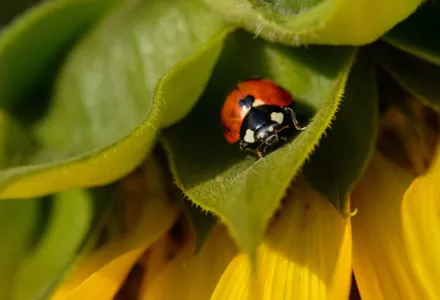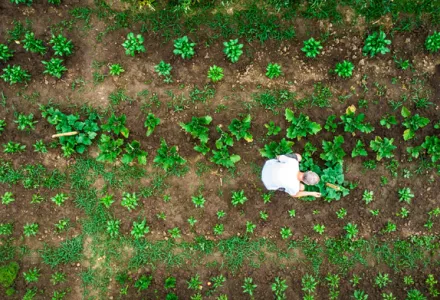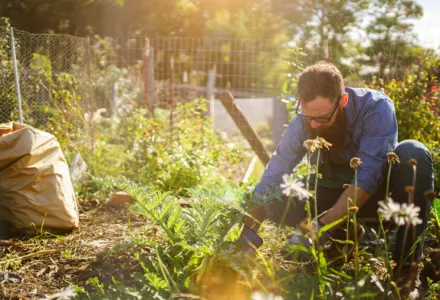At CANNA we see more and more people choosing to grow organically. In fact, over the past decade, organic products have become the fastest growing sector of agriculture, with an annual increase of at least 20 percent. And going from their positive responses and findings, we expect this trend to continue, and for organic growing to become the growing method of the future.
Almost everyone has an opinion or something to say about organic growing, but it’s not clear to everyone exactly what the term means. For many people, the choice to ‘grow organic’ is an emotional one. It expresses respect for all forms of life: growing in an honest and sustainable way. In practice this means that no fertilisers, pesticides, synthetic growth promoters and the like will be used and that the aim is to work with nature in a balanced manner.
Organic, inorganic, mineral, natural: what’s what?
Mineral: The inorganic salts, including sodium, potassium, calcium, chloride, phosphate, sulphate, etc., so called because they are (or originally were) obtained by mining. They are not necessarily natural.
Organic: Chemically, a substance containing carbon in the molecule (with the exception of carbonates and cyanide). Substances of animal and vegetable origin are organic. Organic can also mean many other things, from body parts to growing styles, including defining the most fundamental laws of a government. Loosely translated it means good (unless a body part is involved in which case it is a type of disease, or the law if you violate it). Organic substances are not necessarily natural.
Inorganic: Simply, not organic. See 'mineral'. These substances are also not necessarily natural.
Natural: Present in or produced by nature. Then the definition goes on for ten additional pages to include talent and a colour described as a yellowish grey to pale orange yellow (how can that be natural?). For us, it basically means that something was not man-made but was harvested or processed from nature. These things should be natural by definition, but it really depends on whose definition we use.
Synthetic: Man-made or, more precisely, not natural: artificial or contrived.

Discovery and development of fertilisers
Depending on your point of view farming only started about 12,000 years ago. To be precise, this was after the last ice age, when the climate was gradually warming up. That enabled people to start growing crops for themselves and to remain in the same location for a longer period of time. Growing vegetables and other crops offered security over the precarious hunter-gatherer lifestyle, and mankind could finally move on. And thus the first civilisations arose in Syria, Mexico and China. But back then, obviously, no one knew anything about nutritional elements plants could benefit from.
It was not until the early 1800s that a German chemist named Justus von Liebig first showed the relationship between nutritional elements and plant growth. His experimental research eventually led to the introduction of fertilisers: a true revolution in farming. Although NPK seemed to be the key to success, the first results were variable. Nitrogen (N) was obtained from coal tar, Phosphorus (P) came from bones and Potassium (K) was found as a raw material in the mines of Chile and India. The agricultural land on which he did his experiments soon became some of the most productive in Germany.
The discovery and further development of fertilisers had a huge positive influence on our prosperity. More food could be produced with the same amount of effort. It was almost a century before its disadvantages could be seen. The consequences of this modern farming practice included deterioration of the soil quality and the environment.
Organic and biodynamic farming
Dissatisfaction with this led to two new farming movements in the last century: organic farming and biodynamic farming.
The aim of organic farming is to produce in a sustainable manner and in harmony with nature. To realise and obtain this, organic farming is based on three basic principles:
- No use of chemical pesticides
- No use of chemical fertilisers
- Aiming for a high biodiversity
Implementation of these rules creates a natural growing environment with a good structure and a healthy micro flora. Organic farming combines tradition, innovation and science.

These principles are supported in the use of BIOCANNA products.
Vegetable raw produce
BIOCANNA Bio Vega, Bio Flores and BIOBOOST are vegetable-based and do not contain any residues of animal products. The main advantage of this is that the product is much better matched to the plant’s needs. An additional advantage is that the product cannot contain any animal pathogenic organisms, such as influenza viruses (for example, bird flu) that can be harmful to human health.
Not necessarily biological or organic
Organic, as the term is used in the Green Industry, implies two basic concepts:
- material that is based on an organic molecule and contains carbon
- the end product, plant or fruit that’s harvested or used
Example; if lettuce is organic then everything the crop was given was all natural and organic. This means natural and organic food, pest control, or anything that was used in the process. Be aware that a combination product like a fertiliser can have organic components combined with mineral elements and may or may not be organic, depending on both components.
Many companies cleverly use the fact that organic is reputed to be good and healthy and call their products biological or organic. Be aware of the fact that not all products that use a 'BIO' claim are necessarily biological or organic.
So if you want to grow organic, check before you buy!




